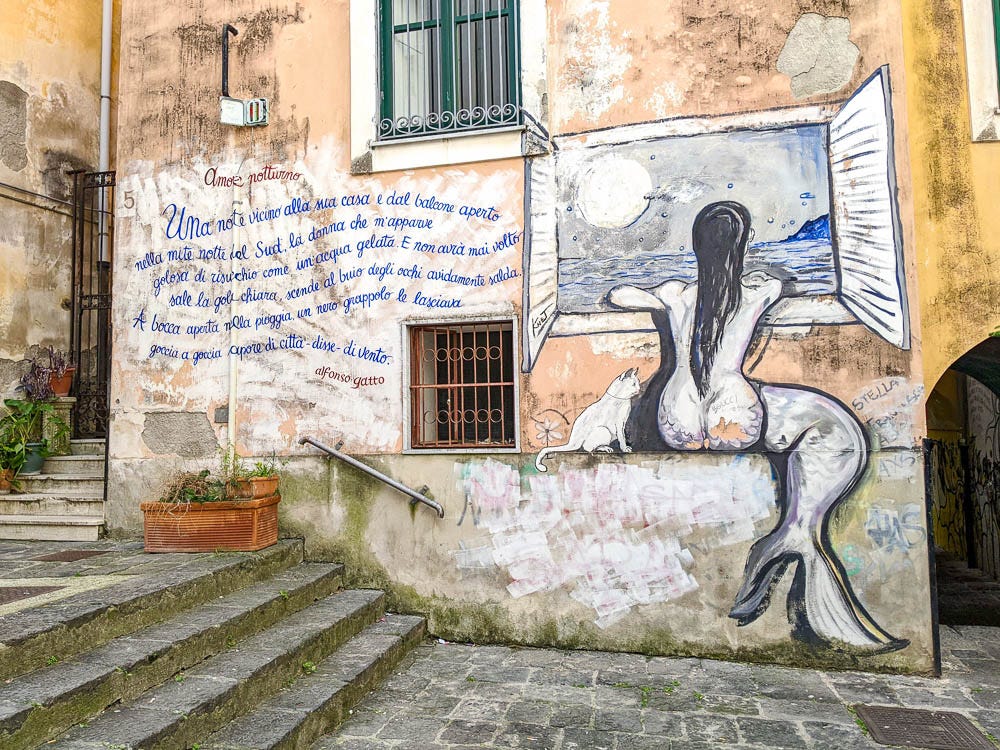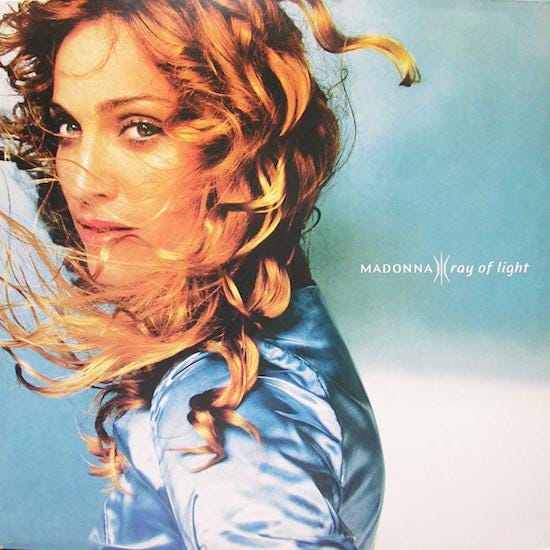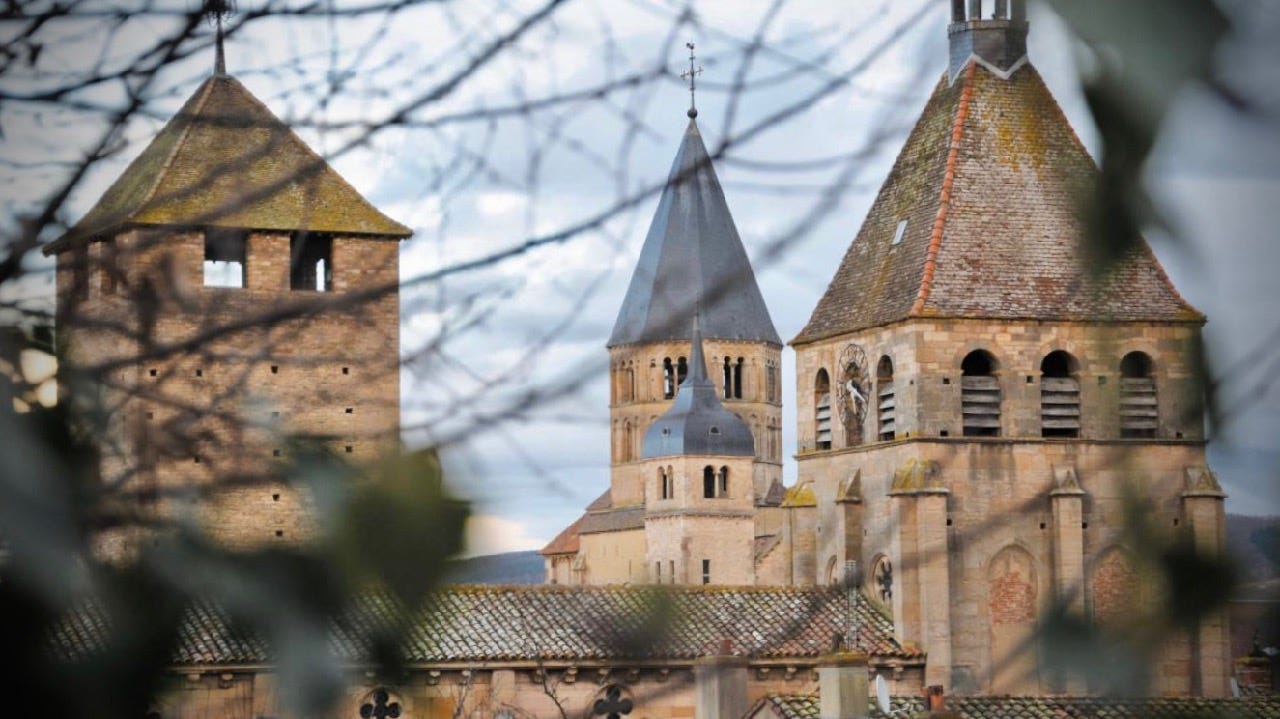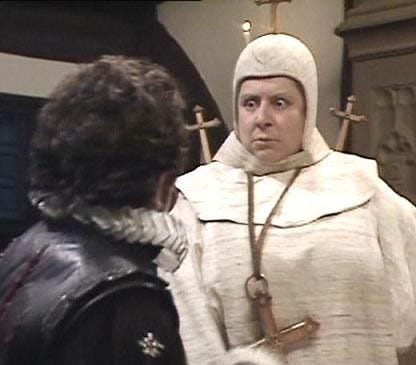Part 1 can be found here.
Salerno, Italy. Che bella! Ancient port town on the Amalfi Coast, one of many historic tourist destinations in the Tyrrhenian Sea; so emerald, so blue…
Tyrian purple so purple; named for the merchant Phoenician’s original great city Tyre, where thousands of little shellfish fermented in their own pungency to colour cloth of rulers from the Byzantine Empire to Roman Catholic bishops...
A day trip to the nearby ‘Cave of the Tyrrhenians’ shows where Benedictine monk’s Trinity of the Cave was founded in 1011. Archives include La Cava Bible (the Cave Bible), created in Spain while Muslims were still about, officially attributed to about 900AD.
Walking up the hill from central Salerno one finds the historic medical school’s Gardens of Minerva, named after Menvra, Etruscan goddess also known as Roman Minerva, goddess of medicine and strategic battle. The root of her name is Proto-Indo-European in origin and stems from ‘mens’ or memory and thought.
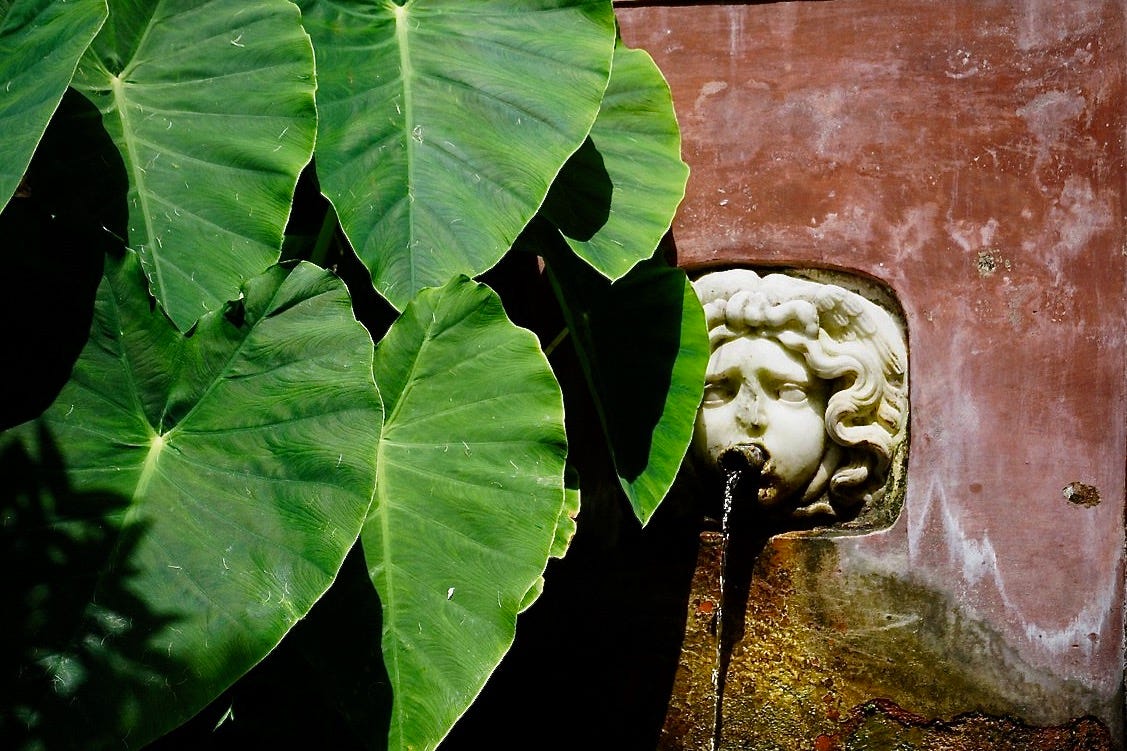
The archeologically inclined tourist might stop in Pontecagnano to visit local excavations (begun 1959) revealing Iron Age and orientalising tombs dating c.3,500BC.
I must have slept through Orientalism in Classics at school but Wiki says it began during the later part of the 8th century BC with the spread of Phoenician civilisation, whose ‘artistic trends also influenced the Etruscans and early Ancient Romans.’
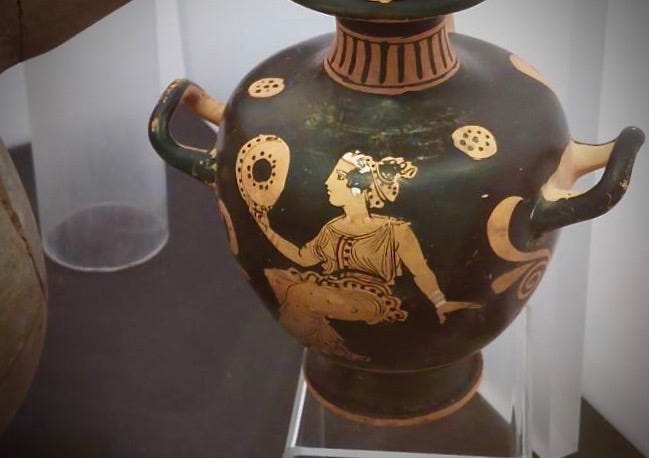
Who were the Etruscans?
Herodotus said of the Etruscans; “They called themselves Tirreni.” The Tirreni set up the town ‘Cave of the Tyrrhenians’ (Cava de’ Tirreni) on the Tyrrhenian sea.
An historically vague king’s son, Tyrrhenus, contains an audible ‘Tyre,’ suggesting Phoenicians as well. The blind depend on ears to develop their world; looking up the word tyrant — it had a neutral connotation during the Archaic and early Classical periods and derives from the Greek tyrannos or “monarch, ruler of a polis (city state).”
Tyrants from Tyre were simply Phoenician rulers. Merchant priests of Tyre: Tyr’ants.
It’s said the Tirreni/Tyrreni influenced the mysterious Etruscans, but… one might reasonably wonder if the Tyrians/Phoenicians influenced the Villanovans; indigenous Italians, thus combining Tyrians and Villanovans, “the Etruscans” appeared.
The official position is; Etruscan is from Etruria, “with no obvious root”. A dead-end?
In Spanish there is an anagram of Etruria; “Uriarte, a surname of Basque origin, which means between cities. The correct etymology of the surname would be the “intermediate space of the villa [or town].” This is in close proximity to “Villanovans” (new village) right before the Etruscans appeared. A hint, but not a confirmation.
The clue however that does appear to confirm this intuitive Etrurian/Tyrian leap is again from Wiki; ‘The Etruscans/Etrurians called themselves Rasenna, which was shortened to Rasna or Raśna (Neo-Etruscan), with both etymologies.’
How then to find a valid translation for Rasna, also spelled Raśna and Rashna? Follow a hunch: Rasna can be translated to mean ‘The Tongue,’ in Hindi and Sanskrit. The tongue is obviously a very apt name for masters of language and phonetics. Rasna are also ancient alchemical processes. The ultimate goal of Rasashastra is not only to preserve and prolong life, but also to bestow wealth upon mankind.
Also, as a Muslim and Hindi girls name, Rashna means Ray of Light, girdle and justice.
Though not written by Madonna, the Ray of Light’s lyrics celebrate the effect of the Kundalini phenomenon; the call of thunder, the ascent, returning home to Self and the Absolute. In biblical terms it’s equivalent with Jesus’ crucifixion and resurrection.
In terms of a masterful priest class, the Phoenician’s phonetic, or sonic trail stays fresh.
What have the Phoenicians of Tyre to do with Doctors, ie. ‘Church Fathers’ in Italy?
It is here proposed that the Tirreni/Tyrians/Phoenicians formed the Benedictine abbey, Trinity of the Cave, in the early 1000’s AD, only six kilometres from the port of Salerno in the Tyrrhenian sea, and in less than a century became directly subordinate to the Holy See under Pope Urban II — the very same pope who made the call to run off the (Islamic) Saracens in the First Crusade. (The why will be made clear further on.)
The medical school became famous thanks to the Saracen/Arabic medical treatises which had been translated and written up by the monks of Montecassino (near Rome) and Cluny (in France) which were the location of the first Benedictine monasteries.
Benedictine is a name related to language too, and translates literally to Say Well.
The Salerno medical school was only a short horse ride from the town called Cava di Tirreni and La Trinità della Cava monastery’s Cava Bible, all three with the esoteric term ‘Cave’ in their titles. Something of enormous value was being hidden (occulted).
Was Phoenician trade purely wealth, power and merchandise-related? Carthage was a new Tyre, a powerful trading outpost. Punicus means “Phoenician” (of Punic Wars and Punic language). Where did the Phoenicians go once wealthy Carthage was razed by Romans? Were they dissolved in Carthage to reform in Spain, to learn from Arabs?
Religion is generally accepted to mean to bind together (nod to the fasce), even girdle.

Meanwhile, over in Spain the Jewish community moved comfortably amongst Muslims and Christians as political, cultural and intellectual collaborators so the story goes, but were the three religious groups already fully developed, or were they learning and developing with each other… or from one group specifically?
Two of the three great monotheistic religious myths originated in a Spanish brew; this initial claim is based upon the Hebrew alphabet being learned by the Gaonim in Spain, who were at that time pupils of the Arabics.
“Aramaic languages belong to the Semitic language family and include Hebrew, Canaanite and Phoenician. The Aramaic alphabet also became a base for the creation and adaptation of specific writing systems. […] These languages are written in the Aramaic alphabet, a descendant of the Phoenician, which apart from public life and administration, was also used as a language of divine worship and religious study.” -Wiki
The religious tracts of Ancient Iran are known as the Avesta, and in North India, the Vedas. Grammatically there is little difference between the two languages; both underwent systematic phonetic change and according to Thomas-Burrow who says in his book, The Sanskrit Language; “It is quite possible to find verses in the oldest portion of the Avesta, which simply by [established laws of] phonetic substitutions can be turned into intelligible Sanskrit.” The Phoenicians left a phonetic trail of evidence as long as the Kali Yuga. If the Etruscans were almost certainly the Phoenicians of Tyre…
— Who were the Phoenicians? —
The word Money comes from the Rig Vedic word, Pani. (V, M and P are interchangeable.) Quoting straight from this Tamil and Vedas source:
“Paved with rock is this our treasure chamber; filled full of precious things, of kine , and horses. These Panis who are watchful keepers guard it. In vain hast thou approached this lonely station.” (Rig Veda 10-108-7)
The above sentence appears (in esoteric terms) instructive, giving what amounts to a ‘free pass’ in the eyes of God to anything deemed worthy of having to be done, to achieve the end goal. They were/are tasked with building the modern world. The post continues;
“Vedic Mantras cover a vast period of time. So it is possible at one time the [Phoenicians, aka.] Pani’s had good business contacts with the Vedic Hindus. Even Homer described them as good and bad people.
They exported purple dye for the dress of Roman kings.
In the Illiad, Homer say(s) that their wares are fit for Gods and kings, and in the Odyssey he says they are bunch of treacherous thieves. He has reflected the Rig Vedic thoughts. Like we see in India, there is a big gap between the literary evidence and the archaeological evidence for Phoenicians. This remains a mystery until this day.
[It was argued] they were Vedic people but who did not follow Vedic religion and migrated westwards.”
Next, the Pani’s (Phoenicians) reputation is discussed:
“Misers and Robbers.
Panis or Phoenicians were very bad people according to the Rig Veda. Panis were:
Robbers or thieves who stole the cows of Vedic Hindus.
They were very greedy and rich.
They accumulated wealth.
They were miserly merchants (RV 1-124-10; 4-51-3; 8-45-14).
They were called Dasyus (Thieves) (RV 7-6-3)
In some places they were called Dasas (RV 5-34-5; AV 5-11-6).
They don’t worship Gods.
They don’t do Fire Sacrifice.
They never give Dakshinas (fees) to the Vedic priests.
They were called wolves (RV 6-51-14) [Fenrir, ya’bastid!]
In some passages the Panis are shown as mythological figures, demons who withhold the cows and waters of heaven and to whom Sarama (dog) goes on a mission from Indra (RV 10-108) […] But Rig Veda never mentioned about their child sacrifice.”
Isn’t this supposed to be a post about doctors? Indubitably.
Say the following under your breath and hear where they’ve been, who they were, what they’ve done: Tyre, tire/tyre, Tyrrhenus, Tyrrhenian, terrain, Mediterranean, tyrannos, Tyrian, Tirreni, tyrant. Is a tire/tyre so named for its perfect symbology — of a full, cosmic cycle that must be completed in accordance with nature?
An Asir Tribe existed in an Arabic province next to Islam’s Mecca. Tyr from Norse mythology was from an Aesir tribe representing war and bloodshed but conversely — honour and justice. Týr stems from the Proto-Germanic Tīwaz, meaning ‘god’.
Germanic Friedrich Von Schlegel (1772-1829), suggested people originating from India were the founders of the first European civilisations, and compared Sanskrit with Latin, Greek, Persian and German, noting many similarities in vocabulary and grammar. Fellow German Gottfried von Herder (1744-1803), a philosopher and theologist, said: “Mankind’s origins can be traced to India where the human mind got the first shapes of wisdom and virtue.”
The great medical school of Salerno merged Greek-Latin, Arab and Jewish medical traditions in a wafting, murky history entwined with the priest class, starting around 900AD. The first physicians were practical healers, but the (oft-misinterpreted) written word made the school famous as information poured in and out of the busy ports.
Meanwhile, back in medieval Italy c.1200, the Great Vowel Shift began to shake things up for a few hundred years; the Phoenicians phonetics were changing shape again...
And shortly thereafter the Catholic church became serious about heresy.
It was in Cluny (France) and Monte Cassino (out of Rome), that Edwin Johnson’s so-called monkish militia worked on developing the Catholic doctrine. Doctor comes from Doctrine; principles/dogmas in a religion or field of knowledge, from Old French doctrine (12c.), ‘whatever is taught or laid down as true by a master or instructor.’
Edwin Johnson (1890) wrote: “It may safely be said that this great Chronicle of the Moslems[/Saracens/Arabs] is the foundation of all the mediaeval chronicles, not only of those compiled in the synagogues, but of those more numerously compiled in cloisters of […] St. Benedict. We here touch the foundations of our Christianity; we here arrive at last at the root of those conceptions of the world and its origin, which, however beautiful and impressive they may be in light of sentiment, have too long troubled our intelligence and impeded the march of more useful knowledge.”
Again — briefly — the original meaning of the word ‘doctor’ and the date it was brought in to the language was c. 1300 from Old French doctour, meaning church father, coming directly from Medieval Latin: religious teacher, adviser, scholar.
The etymology of the word medicine stems from a PIE root med, meaning take appropriate measures. In The Etymology of Medicine, author Thelma Charen writes;
“In Latin, MED appears, in addition to medeor, meditate, […] thought in general or meditation. The verb medeor […] has a remote ancestry, the ancient Indo-European root meaning to think or to reflect, […] found from one end of the Indo-European kingdom to the other. […] It is interesting to note that when it appeared in medieval literature it had not only the meaning of a legal remedy but also of an [alchemic] elixir able to turn lead into gold and copper into silver. […] Dr. Edmund Andrews states […] that medicus implied mediation […] between God and man in a priestly capacity. […]
Dr. Andrews, a keen student of the history of medicine as well as of the evolution of biomedical terminology, knows well and proves ably the development of early medicine in early religion. The physician as temple mediator between the sick and God is historically acceptable [and] he gives substantial linguistic proof which archaeology and history confirm.’ —Thelma Charen The Etymology of Medicine
Medicine has a direct connection to meditation, judgement, reflection and weighing of fact — relating to law, philosophy, metaphysics and appropriate cures for mental, physical and spiritual ailments. In the misty reaches of pre-middle age history, Salerno med. school taught men and women not just medicine but philosophy, law and theology.
Medici is the plural of ‘medico’, meaning physician. The Medici, a Florentine merchant family appeared the same time as the word ‘medicine’ itself — around the 1200's — however, G. F. Young, who wrote 'The Medici' (1913) denies that the family were physicians or apothecaries. Young also notes that every other type of healer (herbalist, diviner, shaman, elder etc.) was pushed out of medical practice for not being part of the official medical system; in 1231 Emperor Federico II declared the activity of a doctor could only be carried out by those holding a diploma issued by Salerno Med. School, a perfect parallel to todays Federation State Medical Board where medical doctrine is conceived and made law for all of the western world. Going against the FSMB is modern heresy and at very least one loses their medical license.
Johnson claimed: “A tedious tale of popes and the anti-popes is the struggle of factions, of nobles, now with one another, now with the common Oriental enemy, […] the bare fact that the monks of Monte Cassino and Cluny were beginning to fight for world dominion after […] the first Crusade is all that we can find to be genuine.”
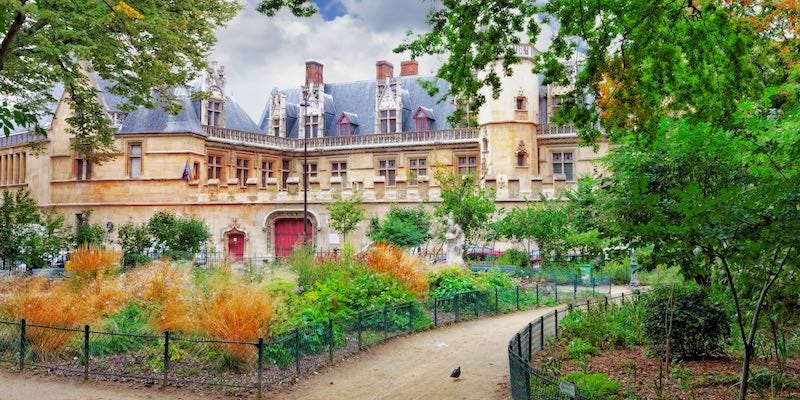
“But when it was seen that the Abbots of Monte Cassino and of Cluny, daily growing in wealth, influence and command of force were aiming to set up a new Caliphate in the West, and to overthrow the old Republic in favour of a new tyranny, no wonder that the utmost jealousy was inflamed against them, and the persons of the Pope were exposed to constant danger. But resistance to the pretensions came too late. The martial manhood of Europe was drawn off to the East.
It was the great opportunity for men of business.
When the Crusaders came straggling back, they found the Jews and the monks in possession — the Jews absorbing gold and making slaves, the monks grasping at land and building palaces; womanhood and family life deeply depressed, the intellectual class employed in reducing reason itself to slavery. We have not yet recovered from the wounds inflicted on humanity during that terrible age, the blame of which falls not so much on the rank and file of the great monkish militia, as on the ambitious and unscrupulous prelates [bishops/abbots etc.] who directed their movements from the cloisters.' —Edwin Johnson The Rise of Christendom (1890)
Here one must pause before Johnson’s perspective, as the last three years have proved that all is not as it seems. Truth often sits somewhere between extremes. The Catholic church, all powerful, knows something — perhaps they know everything. Are they following cyclic, cosmic law that we are too ignorant to understand?
As the saying goes, “It is not the end of the world, but the end of an illusion.”
The Florentine Medici produced queens, dukes and four popes illustrating the ease at which the merchant class rose to the “highest spiritual power” through financial means.
At the end of a Great Year Ragnarok shreds, Kali Yuga inverts, Revelation rips veils ruthlessly and subjects men to an inferno of their own making.
It appeared that knowledge of God was twisted and held down to financial physics, subjecting Spirit to corruption. Man became an intellectual slave to an inverted reality, and the Cathars haven’t even been mentioned yet… But they will be. Oh yes.
One day in c.1460, Cosimo Medici had Catholic priest Marsilio Ficino stop translating Plato (which he was able to reconcile with Christian theology) to translate the Hermetica whose texts ultimately proved Man’s mind was divine. Ficino underwent accusations of heresy but survived. Giordano Bruno (1548-1600) wasn’t so lucky.
The Hermetic metaphor was based on plenitude but the church system was developed on closed principles — debt for sin that can never be repaid. Bruno could prove the open-source principle and was burned at the stake, much like the last Cathar Perfect, Guillaume Bélibaste, burned for heresy in 1321 but who prophesied “good men and women will return in 700 years”, dating to peak coronavirus lockdown, 2021.
(Source of the prophecy is vague but is just as interesting if seeded in recent times.)
The merchant Medici bought their way in to Catholicism during the reunion of the Council of Ferrara-Florence (c.1440) supposedly to reunify the Greek/Latin churches after their split in 1014, but according to Edwin Johnson, the Catholic church was still but a twinkle in the monk’s eye in 1014. How can we ever hope to know the truth?
And while we’re on the subject, why is nobody allowed in to the Vatican Library?
Phoenicians know the phonetic chant of the mercurial sea better than anyone.
Perhaps the Holy See wholly sees the Vedas.
Perhaps Tyrian purple represents the crown chakra in the Vedic system, known as the activated pineal gland, also symbolised by the Vatican’s pine cone.
A doctor with no connection to the meditative spirit is a doctored doctor, a phoney, and they have been treating — not healing — the faithful for the last hundred if not 700 years. But amongst the endless cases of death appears an unusually interesting clue—
The Cathars, the Catholic church and the sound of their names.
Part 3 here.
Conclusion here.





